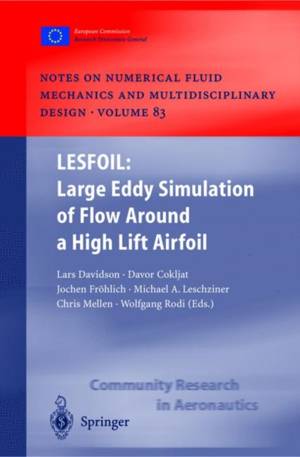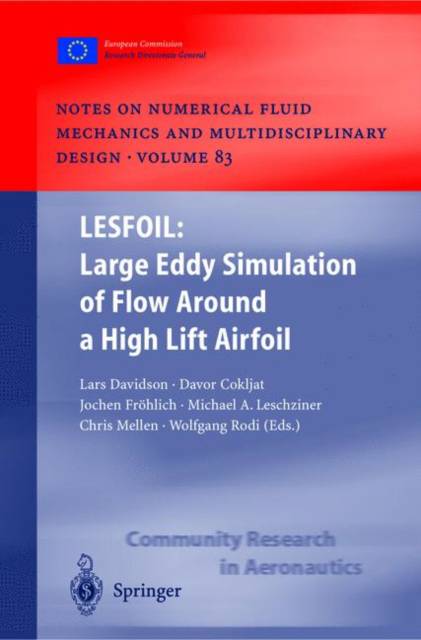
- Afhalen na 1 uur in een winkel met voorraad
- Gratis thuislevering in België vanaf € 30
- Ruim aanbod met 7 miljoen producten
- Afhalen na 1 uur in een winkel met voorraad
- Gratis thuislevering in België vanaf € 30
- Ruim aanbod met 7 miljoen producten
Zoeken
Lesfoil: Large Eddy Simulation of Flow Around a High Lift Airfoil
Results of the Project Lesfoil Supported by the European Union 1998 - 2001
€ 210,95
+ 421 punten
Omschrijving
Large Eddy Simulation is a relatively new and still evolving computatio- nal strategy for predicting turbulent flows. It is now widely used in research to elucidate fundamental interactions in physics of turbulence, to predict phe- nomena which are closely linked to the unsteady features of turbulence and to create data bases against which statistical closure models can be asses- sed. However, its applicability to complex industrial flows, to which statisti- cal models are applied routinely, has not been established with any degree of confidence. There is, in particular, a question mark against the prospect of LES becoming an economically tenable alternative to Reynolds-averaged N avier-Stokes methods at practically high Reynolds numbers and in complex geometries. Aerospace flows pose particularly challenging problems to LES, because of the high Reynolds numbers involved, the need to resolve accura- tely small-scale features in the thin and often transitional boundary layers developing on aerodynamic surfaces. When the flow also contains a separated region - due to high incidence, say - the range and disparity of the influen- tial scales to be resolved is enormous, and this substantially aggravates the problems of resolution and cost. It is just this combination of circumstances that has been at the heart of the project LESFOIL to which this book is devoted. The project combined the efforts, resources and expertise of 9 partner organisations, 4 universities, 3 industrial companies and 2 research institu- tes.
Specificaties
Betrokkenen
- Uitgeverij:
Inhoud
- Aantal bladzijden:
- 248
- Taal:
- Engels
- Reeks:
- Reeksnummer:
- nr. 83
Eigenschappen
- Productcode (EAN):
- 9783642056055
- Verschijningsdatum:
- 22/10/2010
- Uitvoering:
- Paperback
- Formaat:
- Trade paperback (VS)
- Afmetingen:
- 156 mm x 234 mm
- Gewicht:
- 371 g

Alleen bij Standaard Boekhandel
+ 421 punten op je klantenkaart van Standaard Boekhandel
Beoordelingen
We publiceren alleen reviews die voldoen aan de voorwaarden voor reviews. Bekijk onze voorwaarden voor reviews.










